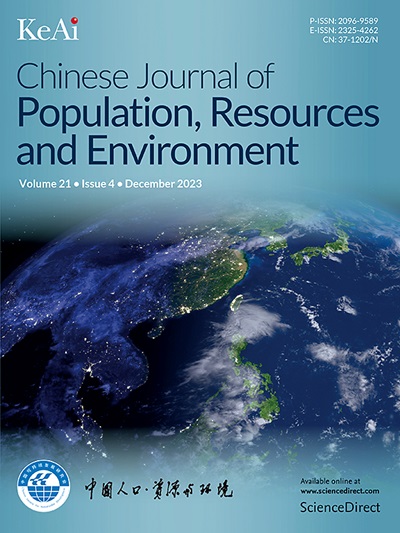中国各省的可再生能源发展是否存在对等效应?
IF 4.8
4区 环境科学与生态学
Q2 ENVIRONMENTAL STUDIES
Chinese Journal of Population Resources and Environment
Pub Date : 2025-03-01
DOI:10.1016/j.cjpre.2025.01.001
引用次数: 0
摘要
中国政府承诺到2030年达到碳排放峰值,到2060年实现碳中和。可再生能源的发展对实现这一目标至关重要。地方政府的行为和态度可能会受到邻居的影响。因此,本研究采用同步自回归模型(SAR)来检验中国各省可再生能源发展的对等效应,并解释中国可再生能源发展的区域不平衡。结果表明:①中国存在同伴效应,内生相互作用是主要原因。②地理相邻省份间的互动具有最大的对等效应。③竞争机制和学习机制都诱发了同伴效应和非均衡发展。本研究在省级层面引入能源相关的同伴效应,以反映政府的偏好并揭示其潜在机制。为政策制定者提供了建议:①选择发达省份作为推动周边地区可再生能源发展的先行者。②区域可再生能源发展政策需要考虑。③中央政府应考虑在评价体系中加入“绿色增长指标”,以避免经济增长与环境保护之间的激励政策不对称。本文章由计算机程序翻译,如有差异,请以英文原文为准。
Will peer effects exist on renewable energy development across China’s provinces?
The Chinese government promises to reach the carbon emission peak by 2030 and achieve the carbon neutrality by 2060. Renewable energy development is important for achieving this target. Local governments’ behaviors and attitudes might be influenced by neighbors. Therefore, this study uses simultaneous autoregressive models (SAR) to examine the peer effects on renewable energy development across China’s provinces and explain the imbalanced renewable energy developments across regions in China. The results exemplified: ① The peer effects exist in China and the endogenous interaction is the main cause. ② The interaction between geographically adjacent provinces have greatest peer effects. ③ Both competition mechanism and learning mechanism induce the peer effects and the imbalanced development. This research introduces energy-related peer effects at the provincial level to reflect the preferences of governments and reveal the underlying mechanisms involved. It also provides suggestions to policy makers: ① Select developed provinces as the frontrunner to promote the renewable energy development in neighboring areas. ② Regional renewable energy development policies need to be considered. ③ Central government should consider adding “green growth indicators” into evaluation system to avoid the asymmetrical incentives policies between economic growth and environmental protection.
求助全文
通过发布文献求助,成功后即可免费获取论文全文。
去求助
来源期刊

Chinese Journal of Population Resources and Environment
ENVIRONMENTAL STUDIES-
CiteScore
4.30
自引率
1.10%
发文量
791
审稿时长
79 days
期刊介绍:
The Chinese Journal of Population, Resources and Environment (CJPRE) is a peer-reviewed international academic journal that publishes original research in the fields of economic, population, resource, and environment studies as they relate to sustainable development. The journal aims to address and evaluate theoretical frameworks, capability building initiatives, strategic goals, ethical values, empirical research, methodologies, and techniques in the field. CJPRE began publication in 1992 and is sponsored by the Chinese Society for Sustainable Development (CSSD), the Research Center for Sustainable Development of Shandong Province, the Administrative Center for China's Agenda 21 (ACCA21), and Shandong Normal University. The Chinese title of the journal was inscribed by the former Chinese leader, Mr. Deng Xiaoping. Initially focused on China's advances in sustainable development, CJPRE now also highlights global developments from both developed and developing countries.
 求助内容:
求助内容: 应助结果提醒方式:
应助结果提醒方式:


